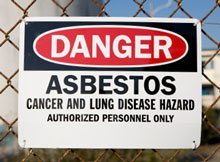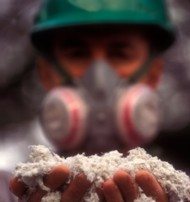Malignant Mesothelioma Versus Asbestos Use: Which Costs More?
 There is some compelling new evidence on the economic impact of banning the mineral asbestos, the primary cause of the malignant mesothelioma.
There is some compelling new evidence on the economic impact of banning the mineral asbestos, the primary cause of the malignant mesothelioma.
According to a team of economic experts and researchers at both the World Health Organization and Australia’s Asbestos Diseases Research Institute, asbestos bans don’t have a negative impact on a country’s gross domestic product or employment rates.
The news comes as rates of both pleural and peritoneal mesothelioma continue to rise worldwide, largely because many third world countries have not only failed to ban asbestos, but are ramping up its use.
Asbestos and Malignant Mesothelioma
As early as the 1940s, when asbestos was a common component of thousands of building products and insulating materials, there were indications that it could be dangerous.
Workers who had helped to mine and process asbestos began to show signs of a lung-related illness. Because many of these workers had long since stopped working with asbestos by the time they got sick, it took many more years to positively identify asbestos as the number one cause of mesothelioma.
In the 1970s and 1980s, the cost of asbestos mining and work had become clear and many countries—including top asbestos producers like Canada and Australia—enacted bans on the substance. The US was not among them.
The Economic Impact of Banning Asbestos
The problem with banning asbestos, from the perspective of developing countries, is that the material is still incredibly useful. Asbestos is plentiful, inexpensive, strong, and resistant to heat and corrosion, which makes it attractive to impoverished nations still trying to build or rebuild their infrastructure.
But a new report published in a special asbestos-focused issue of the International Journal of Environmental Research and Public Health suggests that the cost of stopping asbestos use may not be as high as some governments fear.
Using data from countries that have changed their policies regarding asbestos, the researchers looked for impacts on their economies. “We compare changes in gross domestic product (GDP) following the enactment of asbestos bans,” says the report. “We do not find any significant effect on GDP following an asbestos ban.”
Even when they looked at the local loss of jobs in asbestos production in the wake of asbestos bans, the research team found that most workers quickly found positions in other industries.
Mesothelioma Still Rising Worldwide
The researchers note that asbestos production and consumption has declined globally and that many countries have accelerated the pace at which they are tapering off their use of the mineral.
Unfortunately, there is still much work to be done to make malignant mesothelioma a thing of the past on a global scale.
“Although some countries have reduced asbestos consumption and instituted bans, other countries continue to produce and consume asbestos even as asbestos-related deaths mount and the associated societal costs are high,” states the report.
In the US, where asbestos is still legal, an estimated 2,500 people are diagnosed with mesothelioma each year. There is currently no cure for the disease.
Source:
Allen, LP, et al, “Trends and the Economic Effect of Asbestos Bans and Decline in Asbestos Consumption and Production Worldwide”, March 16, 2018, International Journal of Environmental Research and Public Health, pp. 531





